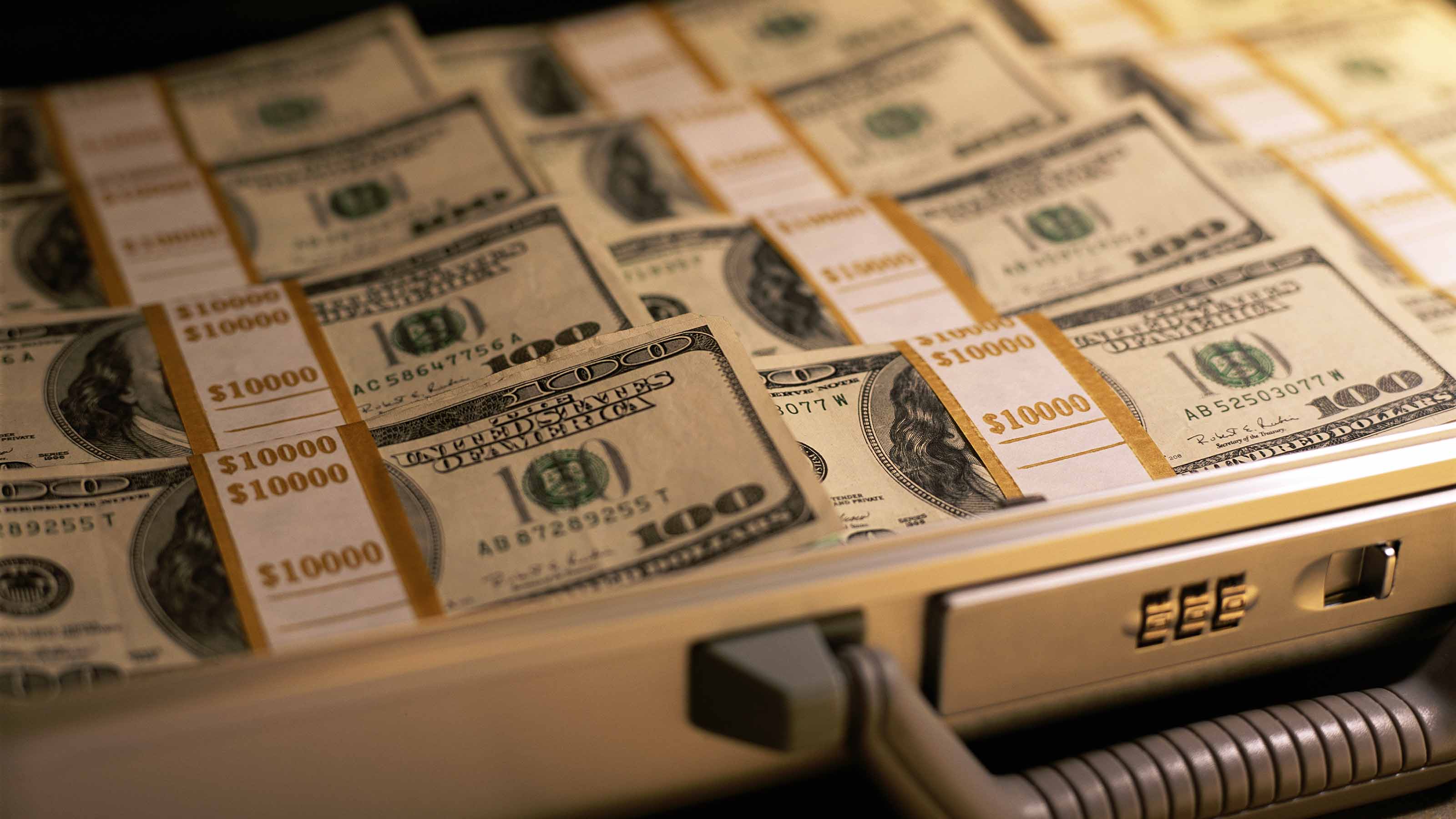Stock Buybacks Are Here to Stay
A new tax on stock buybacks will barely dent a corporate buying spree. But be selective about investing in firms repurchasing shares.

In the 12 months ending June 30, companies in the S&P 500 index spent a record $1 trillion to buy back their own shares, according to S&P Dow Jones Indices. But come January, a new 1% tax on buybacks might dampen corporate America’s appetite. S&P Dow Jones estimates the tax would reduce corporate profits by half a percentage point at current buyback rates.
Buybacks have lately become controversial, with critics arguing that there are better uses for corporate cash. But a 2020 S&P Dow Jones Indices analysis of the 100 companies with the biggest buybacks found that their long-term stock returns generally outpaced the S&P 500.
Many smart investors, including Warren Buffett, are big supporters of strategic buybacks. “If a management wishes to further intensify our ownership by repurchasing shares, we applaud,” he has said.

Sign up for Kiplinger’s Free E-Newsletters
Profit and prosper with the best of expert advice on investing, taxes, retirement, personal finance and more - straight to your e-mail.
Profit and prosper with the best of expert advice - straight to your e-mail.
The new tax is low enough that it will discourage only the most marginal buybacks, say experts, so don’t expect them to disappear. But buybacks can be complex to evaluate. For investors trying to navigate this changing market, a few signals can help you find stocks likely to benefit from share repurchases despite the tax. But first, the basics.
The pros. Buybacks make a lot of sense when a company can sweep up shares whose prices have been irrationally driven below true value by market swings. Such purchases signal insiders’ faith in the company and add demand that supports the stock’s price.
Many investors prefer buybacks over dividends because although you must pay taxes on dividends when they are issued, you don’t pay capital gains taxes until you sell your shares. In addition, when companies buy back more shares than they issue, each remaining share represents a bigger ownership slice of the company
Some investors want companies to distribute cash through buybacks so managers aren’t tempted to make worse choices, says Meb Faber, chief investment officer of Cambria Investment Management. “How many companies have wasted money on naming stadiums?”
Executives like buybacks because by reducing the number of shares outstanding, a company can report higher per-share earnings even when overall profits are flat or down. That can be an especially enticing strategy for any executive whose compensation is tied to rising earnings per share.
Buybacks also give managers flexibility. A company that raises its dividend risks a stock meltdown if troubles later force it to cut the payout. A buyback program, however, can usually be suspended without alarming investors. Another advantage: Every share brought home means one less dividend payment for those companies that also pay dividends, reducing future cash obligations.
Finally, economists like buybacks because they take cash from companies that lack good internal investment ideas and return it to shareholders—who then typically reinvest it in other publicly traded companies (which, presumably, have more-productive investment plans).
| Year | Share Buybacks (billions) | Dividends (billions) |
|---|---|---|
| 2022 (through June 30) | $501 | $278 |
| 2021 | 882 | 511 |
| 2020 | 520 | 483 |
| 2019 | 729 | 485 |
| 2018 | 806 | 456 |
The cons. Politicians as disparate as senators Elizabeth Warren (D-Mass.) and Marco Rubio (R-Fla.) have tried to discourage buybacks. The critics hope to nudge companies to invest more in their operations, generating new jobs.
Although some studies highlight the positive aspects of buybacks, others conclude that shareholders often benefit more from alternative uses of cash. Greg Milano, CEO of Fortuna Advisors, an investment consulting firm, says Fortuna found over the past 12 years that, on average, firms that raised earnings per share due to investments in operations generated twice the stock-price gain of companies that raised per-share profits through buybacks. Dividend payouts also led to slightly higher returns than did buybacks.
And Milano warns that despite the hype, many buybacks don’t end up giving investors a bigger share of a company because companies often issue more shares in stock-based compensation plans than they repurchase. Worst of all, investors have been burned by companies that spent billions on buybacks instead of cleaning up their balance sheets or investing in their businesses to protect against downturns—as some airlines did recently, for example. (For more on airlines, see Why Airline Stocks Are a Bad Deal)
How to cash in. Investors who still want to ride the coattails of buyback programs should follow three principles, experts say. The stocks mentioned below provide good examples.
Avoid dilution. Don’t jump at every buyback announcement. Check whether the company’s overall share count is actually decreasing, thereby raising your ownership stake in the company, advises Faber. You can look up a company’s outstanding shares in its Securities and Exchange filings, or you can find its most recent share count on websites such as Yahoo Finance and YCharts. A good example is McKesson (MCK), says Faber, whose investment firm owns the stock. The distributor of drugs and medical supplies has reduced its share count by 7% in the past year, and over the past five years the stock price has doubled.
Look for price discipline. Successful repurchasers, like successful investors, should buy low. Buffett’s Berkshire Hathaway (BRK.B), sitting on more than $100 billion in cash, buys back its own shares when the price falls below what Buffett calls its “intrinsic value.” Morningstar sector strategist Greggory Warren notes that the company has repurchased $58 billion worth of its common stock since 2019, reducing its share count by about 10%. Warren, a Berkshire bull, believes the company is focused on reducing its long-standing cash hoard through a mix of stock purchases and share buybacks.
Bet on healthy firms. Fortuna’s Milano says the companies most likely to have high long-term returns on their buybacks have strong balance sheets and, ideally, are less vulnerable than other firms to economic or commodity cycles. One company high on his list: Apple (AAPL). Since the start of 2021, Apple has bought back more than $200 billion of its stock, reducing its share count by about 5%. In that time, the stock has gained roughly 6%, not including dividends, compared with a loss of 3% for the S&P 500 index. Says Howard Silverblatt, senior index analyst for S&P Dow Jones Indices, “Apple is the poster child for buybacks.”
Get Kiplinger Today newsletter — free
Profit and prosper with the best of Kiplinger's advice on investing, taxes, retirement, personal finance and much more. Delivered daily. Enter your email in the box and click Sign Me Up.

Kim Clark is a veteran financial journalist who has worked at Fortune, U.S News & World Report and Money magazines. She was part of a team that won a Gerald Loeb award for coverage of elder finances, and she won the Education Writers Association's top magazine investigative prize for exposing insurance agents who used false claims about college financial aid to sell policies. As a Kiplinger Fellow at Ohio State University, she studied delivery of digital news and information. Most recently, she worked as a deputy director of the Education Writers Association, leading the training of higher education journalists around the country. She is also a prize-winning gardener, and in her spare time, picks up litter.
-
 Stock Market Today: Stocks Gain on Tech, Auto Tariff Talk
Stock Market Today: Stocks Gain on Tech, Auto Tariff TalkThe Trump administration said late Friday that it will temporarily halt tariffs on some Chinese tech imports.
By Karee Venema
-
 Sam's Club Plans Aggressive Expansion: Discover Its New Locations
Sam's Club Plans Aggressive Expansion: Discover Its New LocationsSam's Club expansion plans will open up to 15 new stores each year. Learn where they plan to open in 2025.
By Sean Jackson
-
 Stock Market Today: Stocks Gain on Tech, Auto Tariff Talk
Stock Market Today: Stocks Gain on Tech, Auto Tariff TalkThe Trump administration said late Friday that it will temporarily halt tariffs on some Chinese tech imports.
By Karee Venema
-
 Stock Market Today: Stocks Surge to Close a Volatile Week
Stock Market Today: Stocks Surge to Close a Volatile WeekIt was another day with a week's worth of both news and price action, but it ended on a strongly positive note.
By David Dittman
-
 Stock Market Today: Uncertainty Proliferates: Dow Loses 1,014 Points
Stock Market Today: Uncertainty Proliferates: Dow Loses 1,014 PointsWeaker-than-expected consumer inflation data wasn't enough to stabilize sentiment during another volatile day for financial markets.
By David Dittman
-
 Stock Market Today: Tariff Pause Triggers 3,000-Point Dow Rally
Stock Market Today: Tariff Pause Triggers 3,000-Point Dow RallyThe bond market is sending concerning signals as the Trump administration executes its rapid reordering of global trade relationships.
By David Dittman
-
 Stock Market Today: Tariff Talks Drive Another Up-and-Down Day
Stock Market Today: Tariff Talks Drive Another Up-and-Down DayTrade war negotiations are happening, but the "fear gauge" is gyrating, and investors, traders and speculators are still searching for signs of a bottom.
By David Dittman
-
 Stock Market Today: Trump Pushes Dow Into 2,600-Point Swing
Stock Market Today: Trump Pushes Dow Into 2,600-Point SwingTariffs and trade war weigh on prices across global financial markets, with little light at the end of the tunnel.
By David Dittman
-
 Stock Market Today: Dow Drops Another 2,231 Points to Hit a Correction
Stock Market Today: Dow Drops Another 2,231 Points to Hit a CorrectionThe Nasdaq Composite, meanwhile, entered a new bear market with its latest slide.
By Karee Venema
-
 Stock Market Today: Dow Dives 1,679 Points on Trump Tariff Shock
Stock Market Today: Dow Dives 1,679 Points on Trump Tariff ShockU.S. stocks lost roughly $3.1 trillion in market cap on Thursday – the biggest one-day decline since the start of the COVID-19 pandemic in March 2020.
By Karee Venema